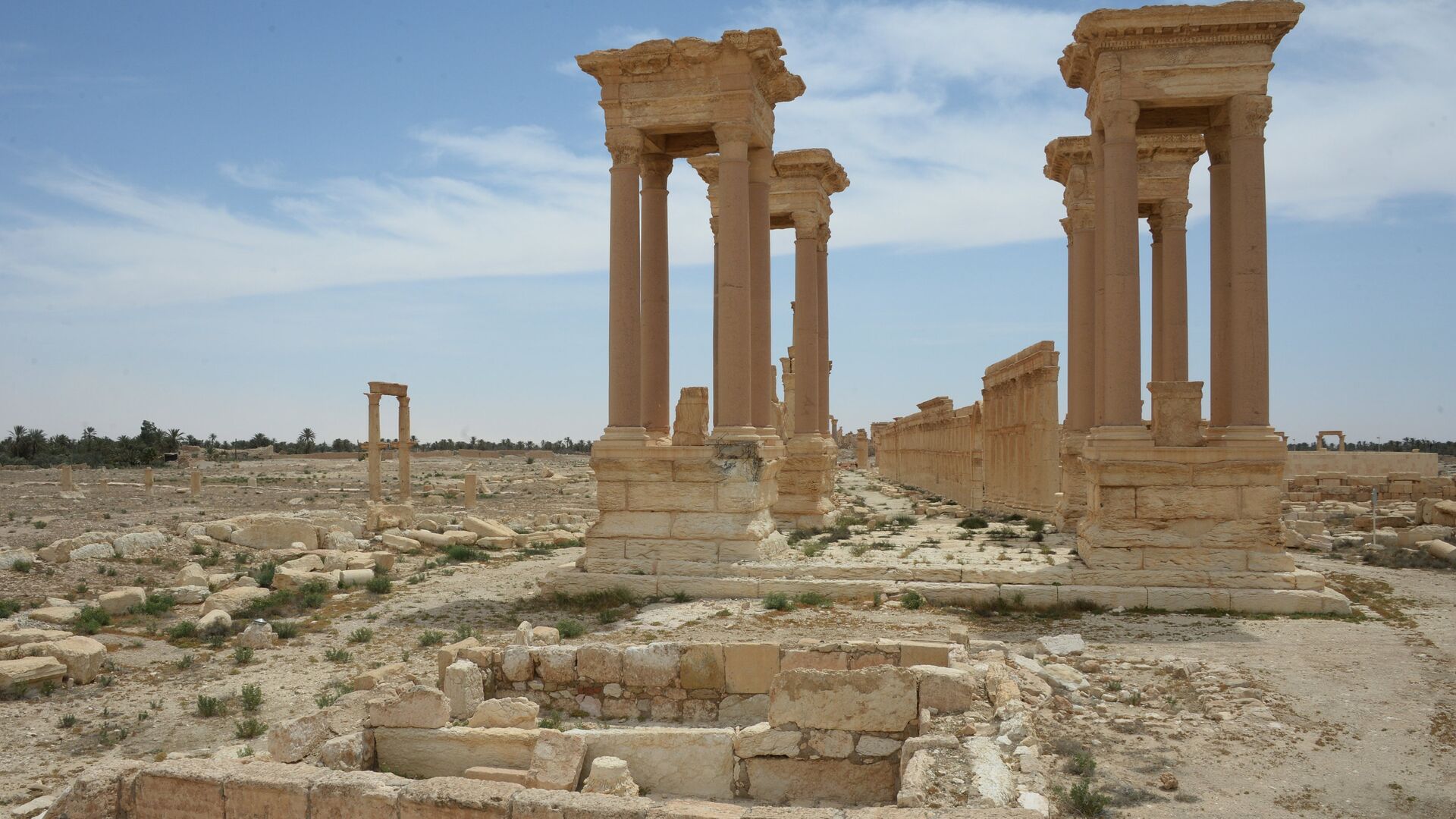Scholar Deduces Likely Identity of Fabled 'Anonymous God of Palmyra'

© Sputnik / Mikhail Voskresenskiy
/ Subscribe
The author of the new hypothesis postulates that rather than addressing a single being, the inscriptions in question may be referencing multiple deities.
A researcher from Poland has apparently managed to solve the mystery related to a number of inscriptions in Aramaic found in the ruins of the ancient city of Palmyra.
The inscriptions in question, some 200 in number, all reference some sort of deity who is never addressed by name, but rather by various epithets, such as “he whose name is blessed forever,” “lord of the universe,” and “merciful.”
“These inscriptions were on stone altars intended for burning the fragrant sacrifice of incense, juniper grains and other aromas and for pouring liquids,” Aleksandra Kubiak-Schneider, a postdoctoral researcher at the University of Wroclaw, told Science in Poland.
As the media outlet explains, scientists spent about 100 years trying to determine the identity of the deity referenced in said inscriptions, even coining the moniker “the Anonymous God of Palmyra.”
“This was interpreted as monotheistic manifestations and tendencies to worship the only god, a mystical dimension of the cult of the Lord of Heaven, Baalshamin, as well as a taboo against speaking the name of the deity similar to that existing in Judaism, because these phrases have been evoking and still evoke biblical connotations,” Kubiak-Schneider remarked.
The Polish researcher, however, noticed that the way of addressing the deity in the inscriptions seemed rather similar to that featured in religious hymns from ancient Mesopotamia circa the first millennium BC.
Kubiak-Schneider therefore postulates that the inscriptions in question reference not one, but multiple deities such as Babylonian pantheon head Bel-Marduk, who was referred to as the “merciful,” and sky god Baalshamin, who was sometimes referred to as the “lord of the world.”
“It is therefore not surprising that the deity's image is not found on the altars, which in this case is not connected with the prohibition on presenting the divine face. There was no one Anonymous God, every god who listened and showed favor to requests deserved an eternal praise,” the researcher remarked.
Meanwhile, Live Science points out that a number of researchers who weren’t involved in the study “reacted with caution” towards the proposal brought forth by Kubiak-Schneider.
For example, Leonardo Gregoratti, a researcher who has studied the history and archaeology of Palmyra, told the media outlet in an email that Kubiak-Schneider "presented [a] hypothesis to the scientific community which will discuss it and each scholar will decide to accept it or reject it presenting [their] counterarguments in the latter case."

